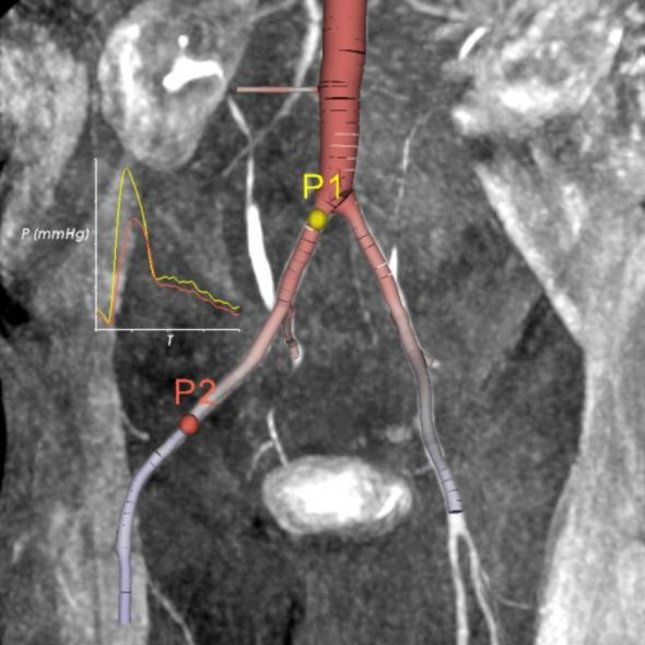
The study of flow in the peripheral circulation is important for the diagnosis and intervention in peripheral artery disease such as intermittent claudication (Stefan Heinen) but is also of interest for aerospace physiology (Joke Keijsers). We use a combination of 3D CFD, 1D wave propagation, and 0D lumped parameter models to describe the pressure and flow waves in the peripheral circulation and investigate the influence of local disturbances such as atherosclerotic lesions (collaboration with the Antonius Hospital in Nieuwegein) and global disturbances such as blood volume shifts and orthostatic intolerance due the influence of variations in gravitational forces (collaboration with DLR in Köln).
Clinical assessment of flow in peripheral arteries is mostly based on duplex ultrasound. In order to obtain more quantitative data simultaneous with wall motion and intima-media thickness, we developed a new technique named perpendicular ultrasound velocimetry (PhD thesis: Beulen 2009). Currently, new data processing to better separate wall motion from blood flow data is under development. To get an overview of this project please have a look at the following poster In Vivo Contrast-Free Ultrasonic Blood Flow Measurements - Gregory Koutsouridis.